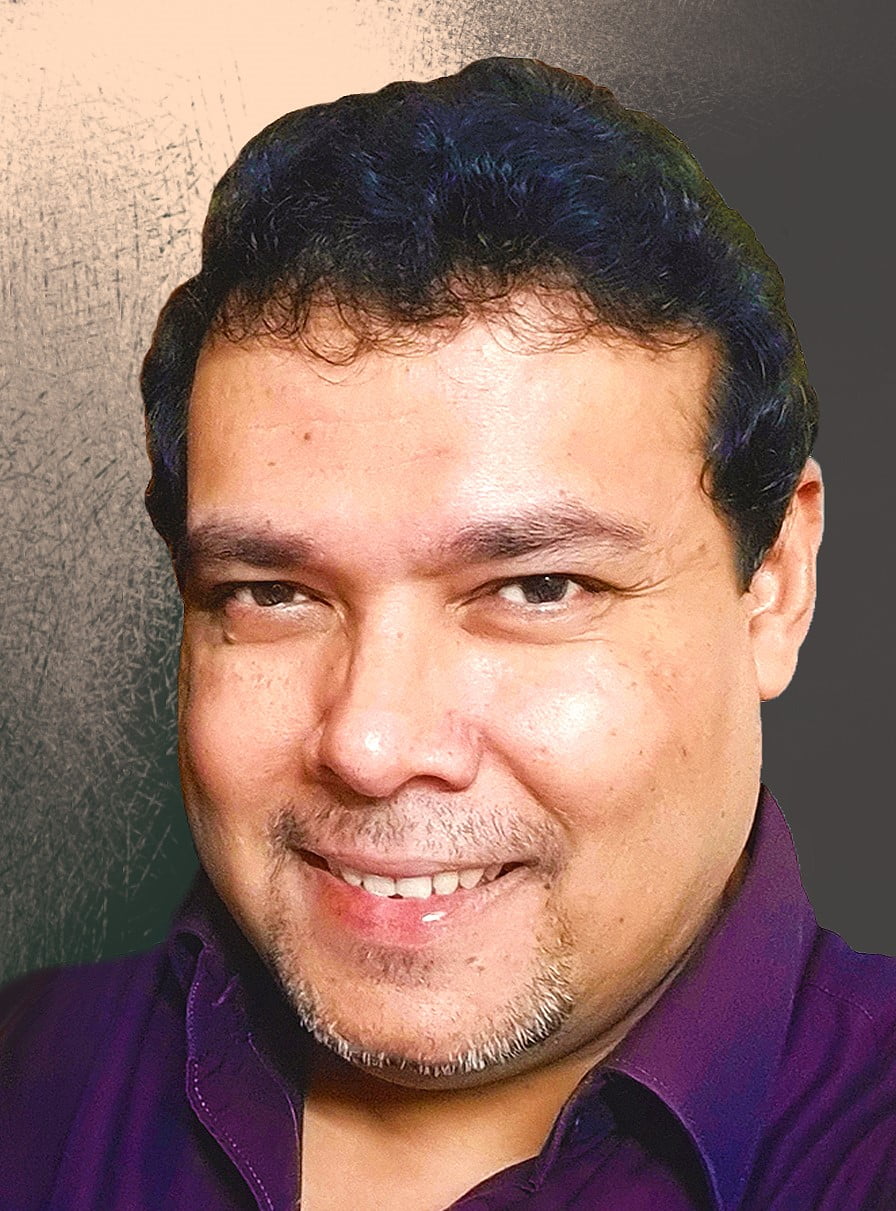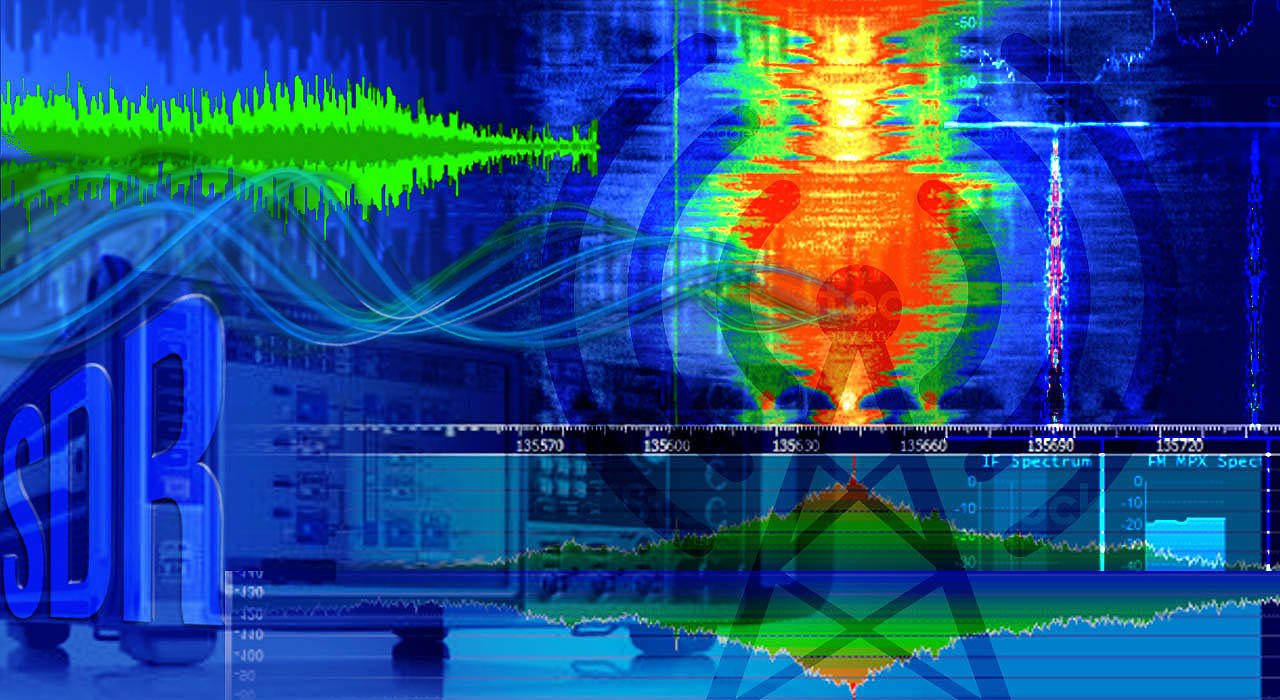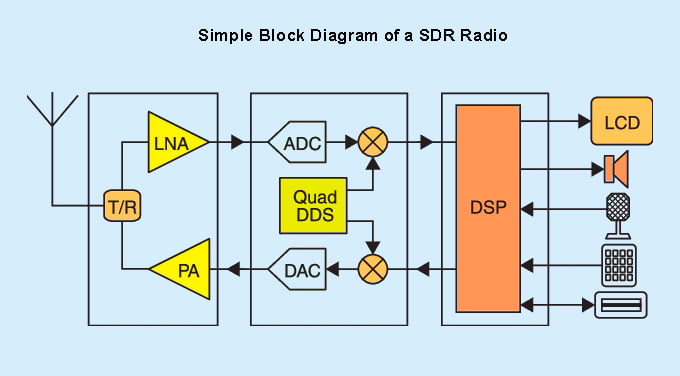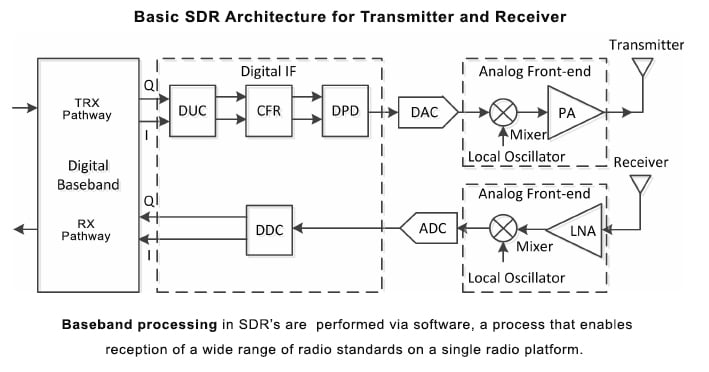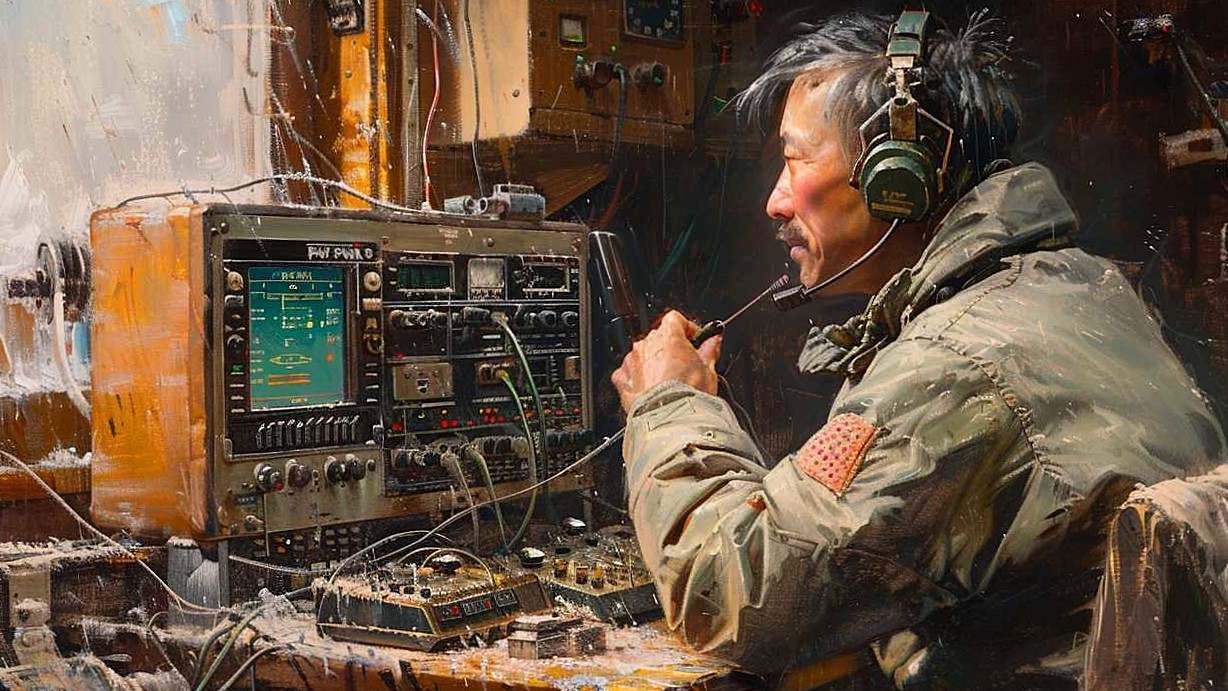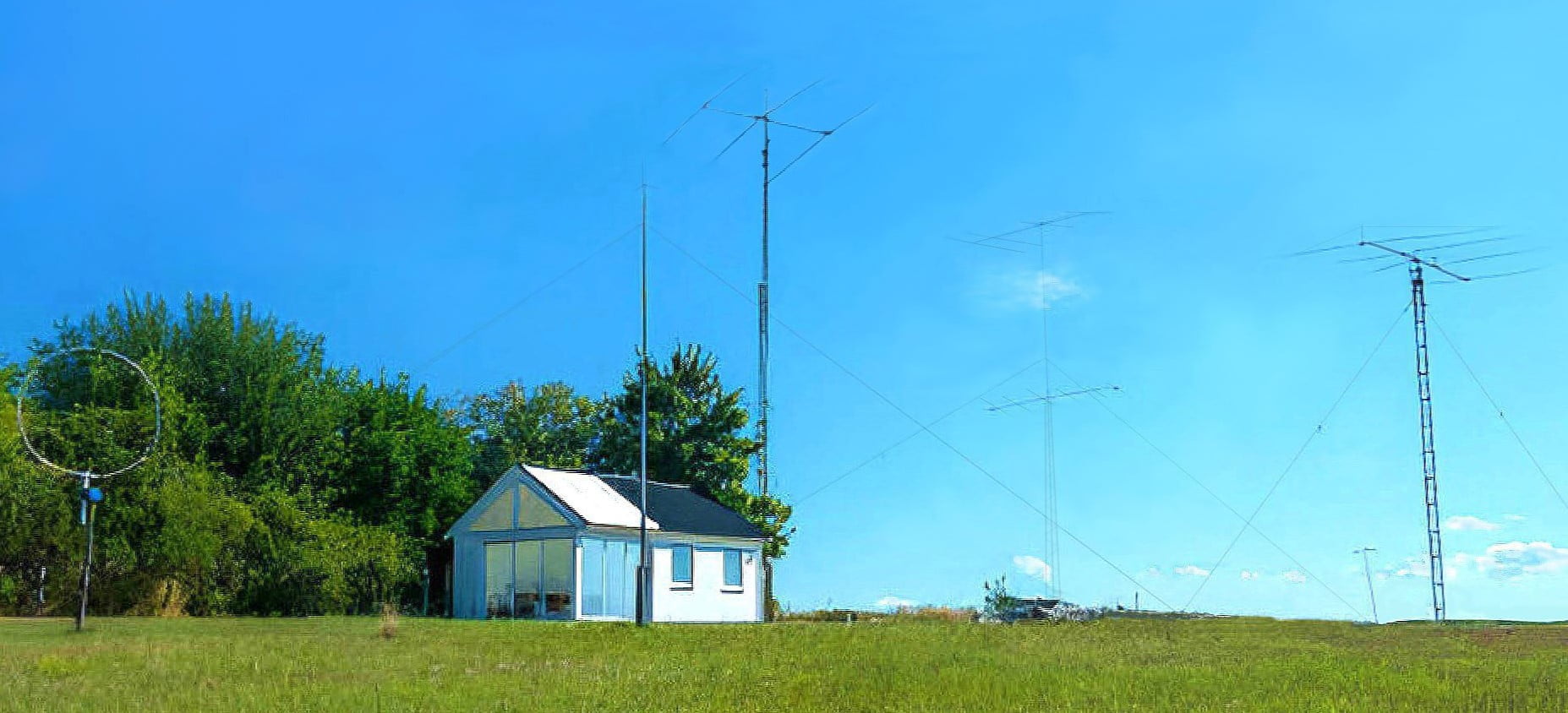SDR or Software Defined Radio, in short, is a radio system that uses software to process signals instead of specific hardware, unlike traditional radios. The advantage is that, since software can be modified in the radio system, the same hardware may be used to produce several types of radios for many different communications standards. So, one software radio can be used for a number of applications!
Amateur Radio, a cornerstone of wireless communication for years, experienced growth of SDR usage since last decade. These radio’s rely on software for many functions, bringing versatile and adaptable benefits to this technical hobby. The good news is that, one does not need to be a programmer or an expert in computers to get started!
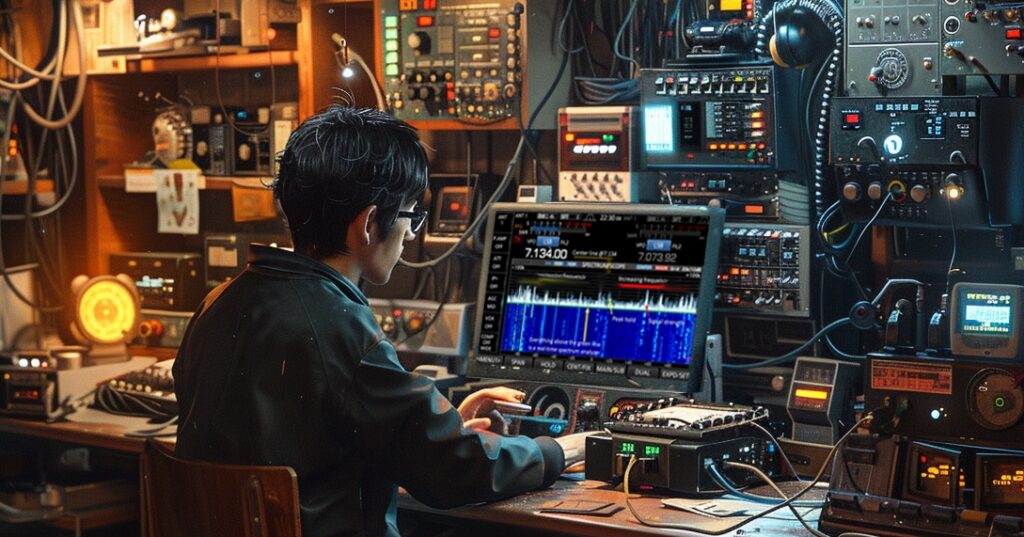
The Traditional Transceiver: Limitations in a Digital Age
For years, ham radio enthusiasts have relied on transceivers with dedicated hardware components for receiving and transmitting on specific frequencies. These transceivers, while reliable and with a classic-rugged appeal, have certain limitations. Adding new features often requires hardware modifications, they can be bulky, expensive, especially for supporting multiple bands, and enhanced signal processing. Additionally, limited programmability restricts their functionality compared to software-driven technology.
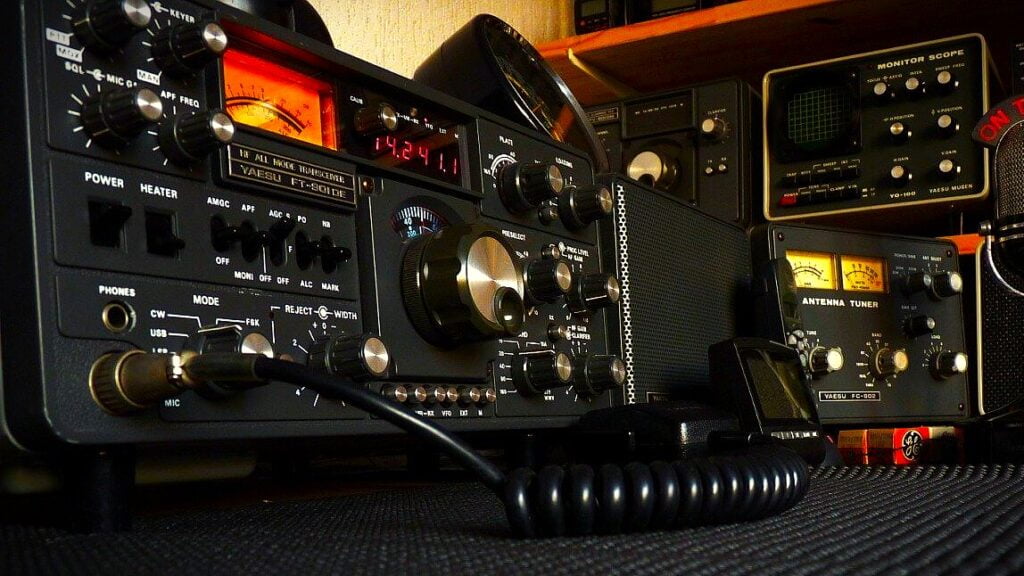
Rise of SDR: a technology with multiple options
Using strong software and programmable hardware, a software defined radio can handle digital data exclusively and can be set to any frequency band. It can also implement different wireless standards and use alternative modulation and demodulation algorithms.
Instead of dedicated hardware for each function, SDRs utilize a RF frontend and a general-purpose computer for processing signals. This allows for incredible flexibility regarding:
- Multiband operation: An SDR can be programmed to receive and transmit on a wide range of frequencies, eliminating the need for multiple transceivers.
- Software-defined features: New functionalities like advanced filtering, noise reduction, and even different modulation modes can be added through software updates.
- Cost-effectiveness: By relying on software and a general-purpose computer, SDRs can be significantly cheaper than traditional transceivers, especially for multiband operation.
- Open-source development: Many SDR platforms have active open-source communities that develop and share new software features, encouraging innovation and customization.
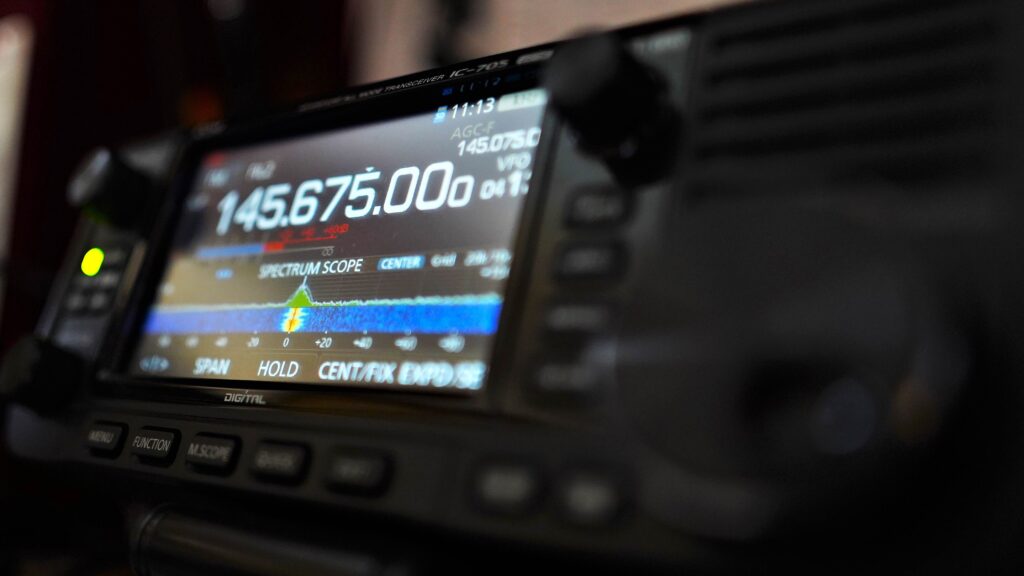
Benefits of SDR for the 21st Century Radio Enthusiast
The advantages of SDRs extend beyond technical capabilities. They offer significant benefits for the future of the radio hobby:
- Accessibility: Affordable SDRs make ham radio more accessible to new enthusiasts, potentially revitalizing the hobby and attracting a younger generation.
- Innovation: Open-source development brings a culture of innovation, leading to new applications and functionalities that wouldn’t be possible with traditional hardware-based transceivers.
- Education: SDRs is a powerful platform for learning about radio communication principles. Their software-defined tinkering possibilities allows for easier visualization and manipulation of signals, making them valuable educational tools.
Challenges and Considerations
Though SDRs offer exciting possibilities, some disagreements are present:
- Learning curve: SDRs offer incredible flexibility, but it comes with a steeper learning curve compared to traditional transceivers. The sheer number of software options and settings can be intimidating for newcomers. To bridge this gap, user-friendly interfaces with clear instructions and readily available tutorials are crucial for wider adoption of SDR technology in ham radio.
- Software Menu driven complexity: The vast array of software options can be overwhelming for beginners. User-friendly interfaces and readily available tutorials are crucial for wider adoption. Unlike traditional transceivers, SDRs’ radios use minimal front end controls, most functions and menus are hidden. Common buttons and knobs, or a touch screen are allocated for multiple options. Many operators, specially old-timers are not comfortable which arrangement.
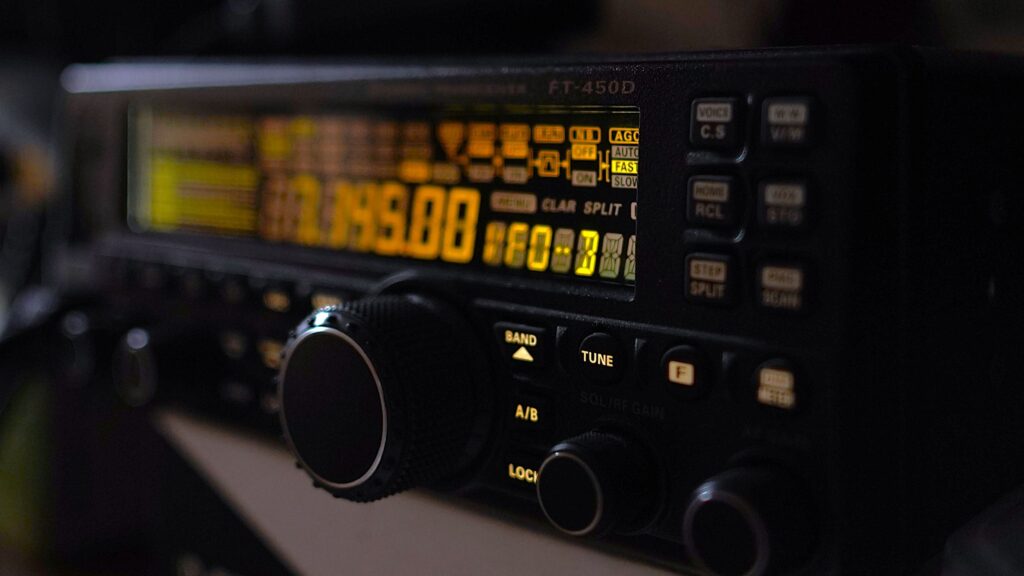
Introduction of Commercial SDR Radios
The fundamental concept of SDRs in radios such as those manufactured by pioneer companies Yaesu, Icom, Kenwood, and Alinco remains unchanged, i.e the processing of radio signals. Nevertheless, these top manufacturers (including a host of other new Chinese radio makers) incorporate SDR technology into their conventional hardware architecture.
- Hardware Foundation: The basic foundations is still the same. These transceivers still utilize dedicated hardware components like- RF amplifiers, analog-to-digital converters (ADCs), audio amplifiers and antenna tuners, all packed in attractive chassis.
- Software-Defined Signal Processing: The magic lies in the additional software hardware with proprietary firmware that handles tasks like filtering, demodulation, and signal enhancement. This software allows for features like:
- Multiband operation: The same hardware can be programmed for different frequencies.
- Advanced filtering and noise reduction: Software algorithms can dynamically adjust to remove unwanted noise and interference.
- User-friendly interfaces: While traditional SDRs primarily relied on physical controls, touchscreens have emerged as potential interface, especially for functions like viewing signals on waterfalls or zooming in on spectrums. Most new commercially available transceivers have decent resolution color screens, if not all touch sensitive.
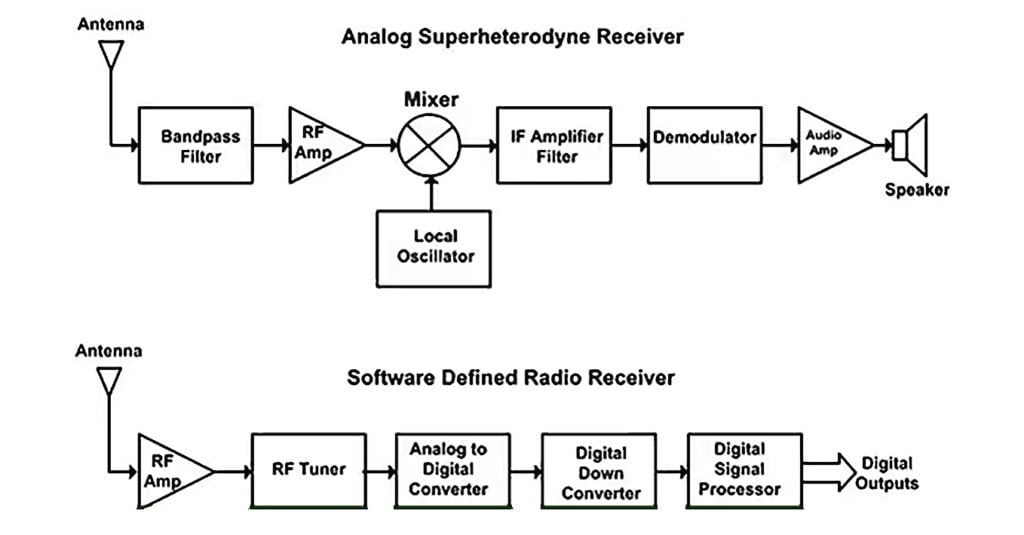
In SDR’s, FPGA’s (Field-Programmable Gate Arrays) integrated circuits are the heart. They act as super-flexible signal processing engines. Its like a blank circuit board which can be programmed to perform specific tasks. This means the FPGA can be configured to handle demanding tasks like filtering numerous incoming signals, demodulating complex digital modes, and even performing real-time signal analysis, all at the same time.
This allows SDR’s to achieve high-performance signal processing without relying on dedicated hardware for each function, making them adaptable and future-proof.

Open-Source SDR Revolution
The world of SDRs extends beyond this, not only limited to Amateur radio. A vibrant community of electronic enthusiasts has developed a plethora of open-source software platforms that transform readily available hardware, like USB dongles, into powerful SDRs. Here are some notable examples:
- RTL-SDR: A low-cost USB-based SDR receiver, for various radio applications like, SW listening, monitoring public service or aircraft communication and decoding weather satellite data.
- Airspy: An open-source hardware platform with a focus on wideband receiving and excellent dynamic range. It’s particularly well-suited for applications like weak signal reception and spectrum monitoring.
- HackRF: This allows for software-defined reception and even transmission across a wide frequency range, making it a versatile tool for experimentation and advanced communication techniques.
- LimeSDR: An open-source hardware platform with a high-performance field-programmable gate array (FPGA) that allows for advanced signal processing capabilities. While more complex, it offers exceptional flexibility for developers and researchers.
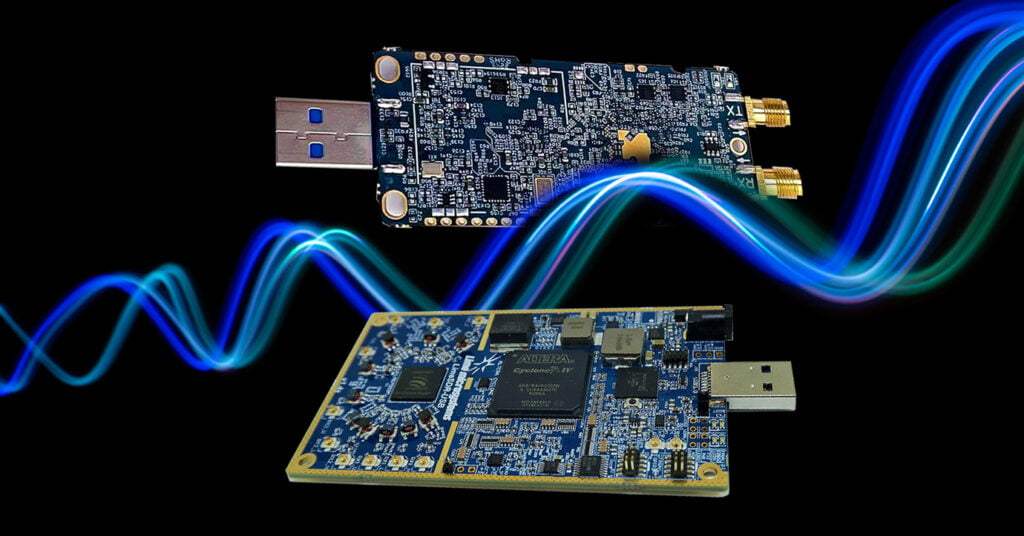
- SDRplay: They have various wideband full featured SDR receiving units which covers the entire RF spectrum with a broad visibility of frequency spectrum.
- KiwiSDR: This global network of web-based SDR receivers allows anyone to remotely tune into various Ham radio, and broadcast band frequencies around the world. It is also a versatile tool for hobbyists to check propagation and test their transmission ranges, while logging in to various kiwi receivers virtually.
- HPSDR: An open-source software suite designed for building high-performance software-defined receivers, transceivers, amplifiers, tuners and power supply. It offers a high degree of customization.
How do these open-source SDR’s work; Are they standalone devices?
Most SDR dongles require a PC, laptop, or phone to run the display and handle the software processing, reasons why:
- Limited Onboard Processing: SDR dongles themselves are primarily focused on receiving and digitizing radio signals. They lack the processing power and memory to run complex software for tasks like displaying the spectrum, demodulating signals, and user interaction.
- Software-Defined Functionality: SDRs rely on software to define their functionality. The software processes the digitized signal from the dongle, interprets it, and presents it on the user interface. A PC, laptop, or phone provides the platform to run this software.
- User Interface and Control: SDR dongles usually lack physical controls for user interaction. The software running on the PC/laptop/phone provides the user interface for visualizing the spectrum, adjusting settings, and controlling various functionalities.
There are a few exceptions are some high-end SDR dongles, which are advanced to have built-in microprocessors and limited displays, allowing for basic functionality without a separate device. However, these are less common and typically offer fewer features compared to software-defined solutions on a PC. Radio’s from Flex System, Expert ElectronicsMB1 SDR, and Apache Labs/Anan are examples of such high end all in one integrated SDR’s.
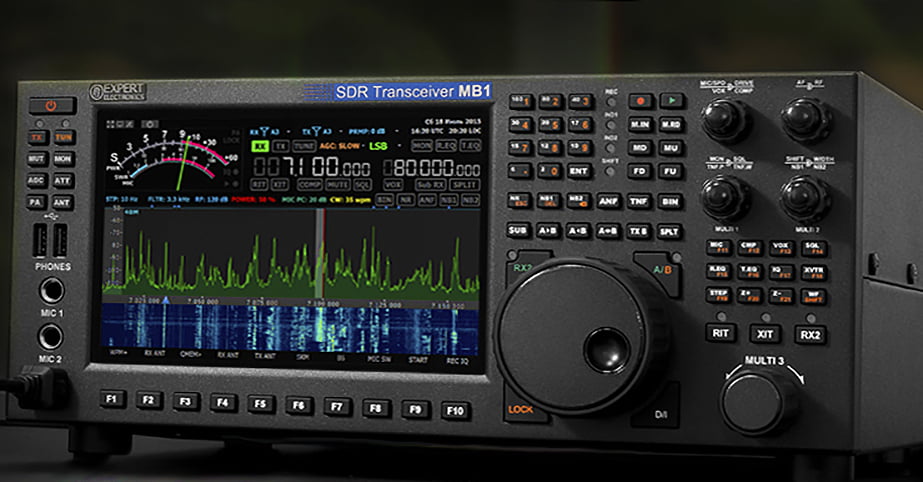
A Future Full of Spectrum with SDR’s
The spirit of Amateur Radio extends far beyond technology. For many veteran operators and even freshers, the traditional knobs, dials, and meters might hold a special charm, representing years of experience and passion of radio principles. There’s a place for both approaches in the ever-changing digital world.
Radio manufacturers can play a crucial role by offering a spectrum of options. SDR’s with intuitive interfaces and user-friendly features can bridge the gap for newcomers, while traditional transceivers can continue to cater to those who cherish the classic ham radio experience.
Ultimately, the future of Ham radio lies in innovation, and to be able to communicate directly of far places. Its rich history and core values has to be preserved as well. Whether adopting any of the worlds, the joy of connecting and exploring the radio waves remains at the heart of this incredible hobby.

